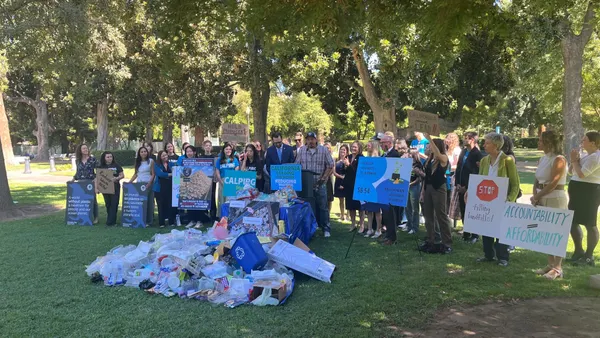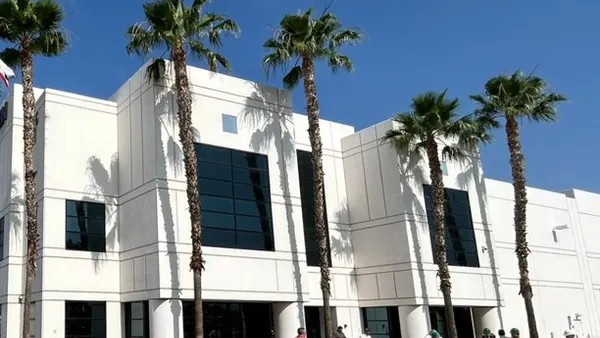Dive Brief:
- A multi-phase project by the North Central Texas Council of Governments in Texas (NCTCOG) recently completed a waste characterization study and survey involving 10 cities and seven MRF operators. A waste stream analysis conducted by Burns & McDonnell looked at approximately 5.4 million tons of refuse from single-family homes over a five-day period at the McCommas Bluff Landfill.
- Results found that approximately $122 million worth of recyclable materials are sent to the landfill annually. The study distinguished between items made from commonly recycled materials – such as plastic, metal, glass or paper – and items that could have actually been recycled.
- The next major phase to the project is a regional public education campaign led by The Recycling Partnership. The campaign, which is scheduled to kick off in May 2019, will be based on the nonprofit's existing "It's All You" campaign and guided by the characterization and survey results.
Dive Insight:
NCTCOG and the Resource Conservation Council launched the project in 2018 with a grant from the Texas Commission on Environmental Quality. Participants are also receiving free access to the new Municipal Management Program tool from Re-TRAC Connect.
The work comes on the heels of two other major studies on recycling in Texas: the 2015 Texas Recycling Data Initiative and the 2018 Study on the Economic Impacts of Recycling in Texas. Both studies provide state-level data on tonnages, contamination rates, recycling rates and the economic components of recycling – information that had previously been in severe shortage.
The NCTCOG waste characterization study adds to that conversation, providing regionally-specific data and analysis for material coming from Dallas, Fort Worth, Arlington, Garland, Grand Prairie, Irving, Frisco, Mesquite, Allen and Weatherford.
Organics were found to be the largest part of the waste stream at 44%, suggesting that efforts to reduce the amount of food and yard waste being disposed could significantly increase landfill lifespans in the region. Many cities across Texas lack programs that provide opportunities for organics diversion.
The composition of the rest of the stream broke down as 22% paper, 16% plastic, 7% glass, 6% "other" (fines and inorganics), 3% metals, 1% C&D and 1% "problem materials" (hazardous waste, electronics, bulky items).
Because this was an overview of refuse and recycling combined, not all material ended up in the landfill. A separate analysis by category found that 36% of paper is being disposed, followed by 27% of plastic, 54% of metal and 81% of glass.
The MRF survey found that approximately 450,000 tons of materials are being sold by regional facilities. The seven MRFs that contributed information were operated by Waste Management, Republic Services, Waste Connections, Balcones Resources, Pratt Recycling, Community Waste Disposal and FCC Environmental.
The Recycling Partnership also asked MRF operators to provide specific feedback on their inbound streams, and the results reinforced several items as known offenders for contamination and safety issues. The top five most detrimental items were: 1) wire, hose, cord, rope, chains; 2) plastic bags; 3) propane tanks; 4) food/yard waste and 5) needles/medical equipment.
This represents a significant regional effort to understand the waste stream in detail and outline steps to increase capture rates and decrease contamination in the recycling stream. Now that market demands are more stringent, it has become increasingly common to see local or regional education programs attempt to capture more clean material. The data gathered from this study will serve as a valuable baseline to help communities in the region, and across the state, advocate for greater recycling efforts in Texas.









